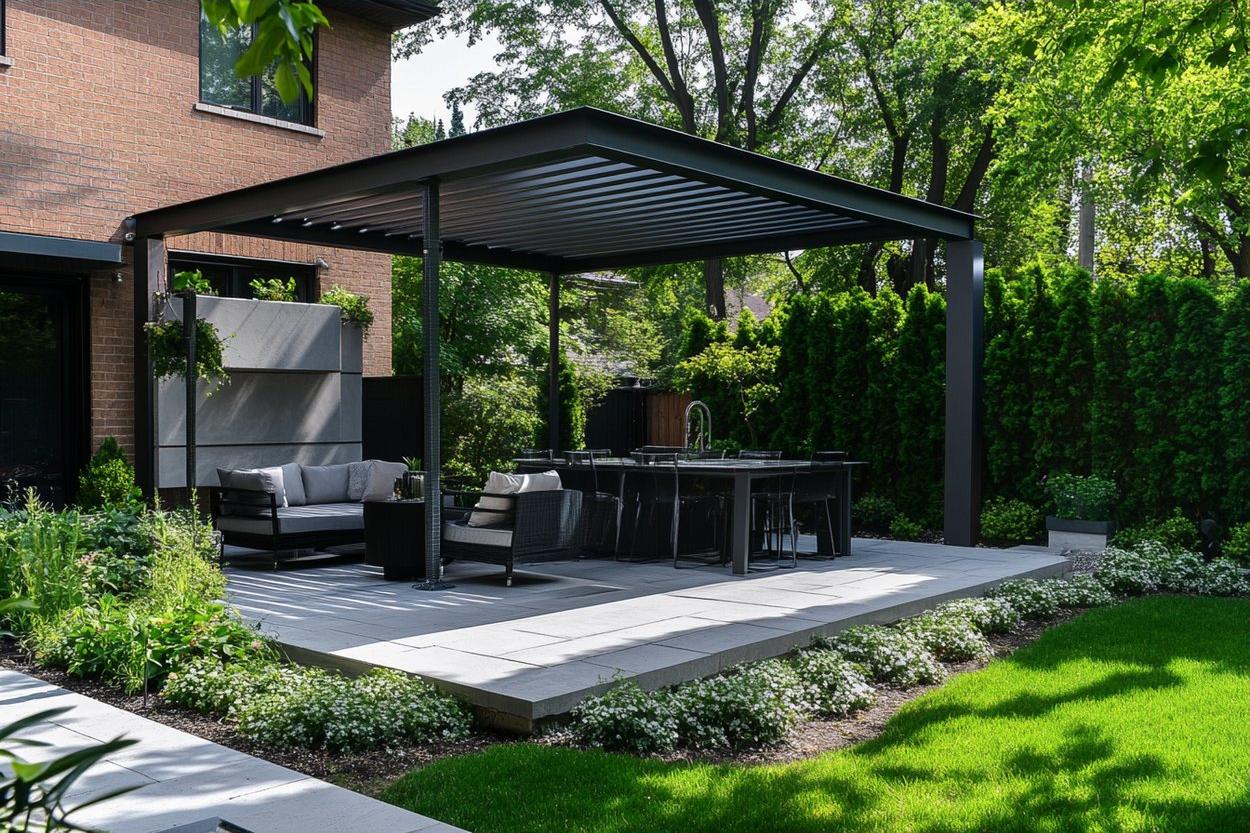Creating Functional Patio Zones for Cooking, Dining, and Relaxation
Designing a patio that supports cooking, dining, and relaxation depends on clear zoning, practical circulation, and plant choices that suit your climate. This article outlines layout ideas, material choices, and planting tips to help you create distinct, functional outdoor areas while supporting pollinators and conserving water.

A thoughtful patio layout transforms an open backyard into coordinated zones for cooking, dining, and relaxation without sacrificing cohesion. Start by observing sun patterns, wind, and existing sightlines so you can place a cooking area where ventilation and access to utilities are easiest, situate dining where shade and evening light are pleasant, and reserve quieter corners for lounging. Integrating landscaping elements and simple hardscape transitions helps guide movement between zones while maintaining a unified aesthetic.
How can landscaping define patio zones?
Landscaping is central to separating functions while keeping the patio visually unified. Use hedges, low walls, or changes in planting beds to create subtle boundaries that feel natural in a backyard. Contrast textures—gravel paths, turf, and planting beds—so each zone reads differently from a distance. Plan sightlines so cooking, dining, and relaxation areas are connected but not competing. Strategic placement of trees or taller perennials can provide shade and privacy where it’s needed most while supporting pollinators and adding seasonal interest.
How to plan a patio for cooking and hardscape?
The cooking zone benefits from durable, heat-resistant hardscape and easy access to water and utilities. Choose materials such as pavers, concrete, or compacted gravel for stable surfaces that handle grills and prep tables. Allow for safe circulation around appliances and include storage for utensils and outdoor cookware. Consider a semi-covered structure or pergola to protect from sun and light rain, and position the dining area nearby on a slightly softer surface so guests can flow naturally from cooking to eating without crowding the prep space.
What planting choices support perennials and pollinators?
Planting perennials near seating and dining areas adds fragrance, texture, and year-over-year structure with minimal replanting. Select a mix of native perennials that attract pollinators and tolerate local conditions; clustering species creates visual impact and supports bees and butterflies. Use layered planting—groundcover, mid-height perennials, and taller accent plants—to soften edges of hardscape and offer seasonal variation. Avoid aggressive spreaders near patios, and plan mulch and soil amendments to support healthy root systems and long-term growth.
Can xeriscaping, irrigation, and mulching work together?
Xeriscaping principles reduce water use while maintaining attractive planting beds suitable for many climates. Choose drought-tolerant species and group plants by water needs to simplify irrigation. Install efficient irrigation such as drip lines or soaker hoses on timers to deliver water directly to root zones. Mulching conserves moisture, suppresses weeds, and moderates soil temperature; organic mulches also contribute nutrients as they break down. Combining these approaches creates low-maintenance beds that complement patio zones while conserving resources.
How to use vertical elements to save space?
Vertical solutions expand planting and privacy options without reducing usable patio footprint. Trellises, living walls, and container stacks support edible vines, flowering climbers, or herb gardens close to cooking areas. Vertical planters can define a dining alcove and provide a green backdrop for relaxation spaces. Use sturdy, weather-resistant structures and choose plant species suited to vertical conditions—shallow-rooted herbs, trailing perennials, and compact vines—to ensure long-term success and easy maintenance.
How to integrate composting and maintenance in the backyard?
Composting fits neatly into many patio designs if positioned away from primary seating areas and shielded with planting or screens. A compact bin or tumbler can handle kitchen scraps and provide nutrient-rich material for mulching beds and container plants. For ongoing maintenance, set up discreet storage for tools, irrigation controls, and seasonal cushions near the hardscape to keep the patio tidy. Consider hiring local services for larger irrigation or major hardscape work, and plan access routes so maintenance tasks don’t interrupt daily use.
In conclusion, creating functional patio zones relies on deliberate zoning, material choices, and plant selection. Thoughtful landscaping, appropriate hardscape, efficient irrigation and mulching, vertical plantings, and integrated composting all contribute to a balanced outdoor living space where cooking, dining, and relaxation coexist comfortably. With careful planning the patio becomes an adaptable extension of the home’s living space.





